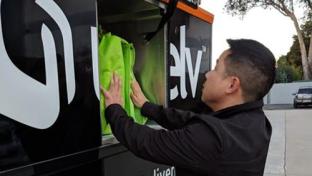Grocers: It's Time to Disrupt Your 'Traditional' Predictive Analytics Approaches
Within retail, the grocery business is at the forefront when it comes to innovations in data analytics. However, the software that enables predictive analytics is decades old, developed when computing technology was not nearly as powerful as it is today. "Traditional" predictive analytics approaches are rife with opportunities for disruption.
The rise of artificial intelligence (AI) forces the question of whether traditional predictive analytics are truly supporting profitable decision making. Through the relatively recent rise of advanced computer processors called GPUs (graphic processing units), we have access to exponentially accelerated computing speeds and processing power, meaning AI-driven data analysis is possible and accessible to more organizations at a speed that was computationally impractical just a few years ago.
"The pace of adoption in our enterprise business is growing every day," according to Eric Thorsen, global business development for retail and consumer products at Santa Clara, Calif.-based technology company Nvidia. "Especially in retail, there is a tremendous opportunity to kickstart old business processes using this new technology."
AI using reinforcement learning is able to run simulations of the future, gaining intelligence from scenarios that will never need to be executed, and therefore helping top grocers learn faster than traditional test-and-learn approaches, which happen at the pace of time. With massive GPU computing power, simulations can learn years of retail every day.
The AI Approach
The AI approach is based on processing all the available data and evaluating the connections and relationships between every single product, which sheds light on the various "ripple" effects – such as cross-category cannibalization/affinity, promotional and price elasticities, and forward-buying – that occur across the entire retailer's product assortment anytime a decision is made.
Now apply this same holistic measurement and simulation to pricing decisions. AI can play out an astronomical number of trade-offs and scenarios of promotional and regular pricing to deliver results: decisions are made – not on a margin per SKU basis, but on an organizational blended margin rate to deliver expected long-term profits.
"Traditional business processes like SKU-store rollups have traditionally not been calculated regularly due to legacy hardware constraints," Thorsen states. "Now retailers with large assortments and many stores can accurately perform these calculations to understand product demand, promotion plans and replenishment schedules."
What Makes AI so Important?
For the high SKU counts and high transaction frequencies in the grocery business, AI is a significantly more powerful approach than traditional predictive analytics.
The insights that AI provides support significant topline sales growth without increased promotional cost. In the high-volume, low-margin supermarket industry, AI is a technology that will prove to be as impactful as the internet – while those grocers that succumb to the "sunk cost" fallacy and continue to prioritize investing in legacy predictive analytics tools over AI face nothing short of existential risk.






